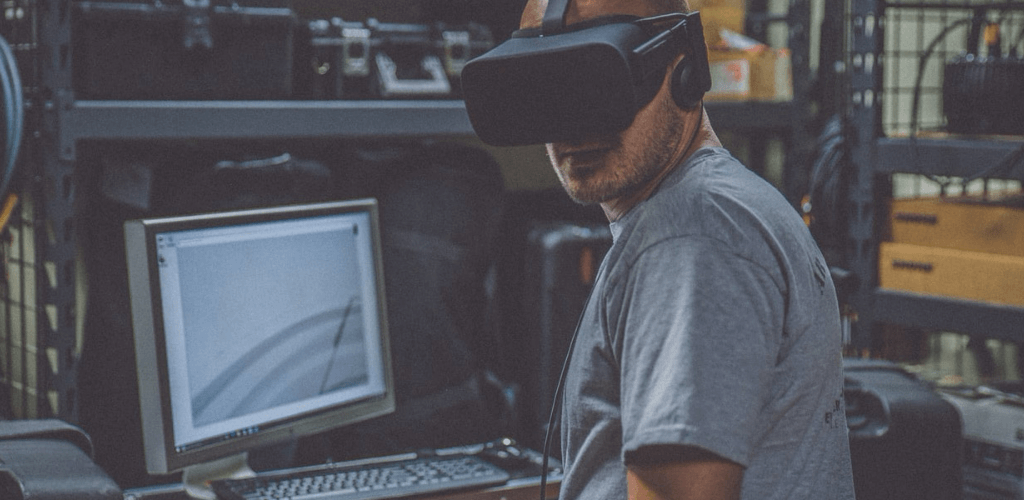Quality Assurance in the Context of Virtual Reality – The challenges

By Christina Jurges, Ph.D., in collaboration with Sophie Callies, Ph.D.
With new media and technologies come new challenges. Knowing and addressing these is key when it comes to successfully handling VR projects.
Preventing simulator sickness
Simulator sickness is “a combination of symptoms clustered around eyestrain, disorientation, and nausea” (https://developer.oculus.com). Simulator sickness can be avoided by using VR development best practices. Although “VR as a popular medium is still too young to have established conventions that address every aspect of the experience,” respecting specific elements during the development phase can help create a pleasant learning experience for the user. Some elements include a teleport button, respecting the ideal amount of light, images or text blocks. Oculus has come up with quite a comprehensive list of best practices that can be consulted here:
Respecting these elements will lead to less user problems than before and still guarantee an immersive user experience. Ensuring that the user and QA resource are well prepared can also be done by having them fill out a form before using the product, such as a pre-questionnaire outlining the rules and risks of moving within a VR.
The risk of epileptic seizures is also an issue. As Oculus explains with regard to Image Safety and Photosensitive Seizures, “certain types of images are believed to be capable of triggering photosensitive seizures in a small portion of the population. […] The International Standards Organization is in the process of developing a standard for image content to reduce the risk of photosensitive seizures.”
Time limitations
The maximum recommended time to spend in a VR is 30-40 minutes, after which many users need to stop due to simulator sickness. Simulator sickness is more common in the context of VR games, whereas in the world of e-learning we can speak more of “simulator fatigue.” It is important to give the brain a break. This is something that needs to be taken into account during the development phase of an e-learning course and which also influences the QA timeframes. Overall QA time will most likely increase due to these limitations.
We can already adapt to these circumstances during the creation of the course: ideally, a VR learning session should be no longer than an hour at a time. An idea would be to make use of module architecture (as is done in non-VR courses that have a long seat time) and introduce VR pauses at the end of each module.
Outsourcing QA
Outsourcing VR QA to a specialized vendor has the advantage of saving money on equipment and having a specialized on-call team in place.
Again, Oculus gives good advice on the QA aspect: “Test your content with a variety of unbiased users to ensure it is comfortable [for] a broader audience. As a developer, you are the worst test subject. Repeated exposure to and familiarity with the Rift and your content makes you less susceptible to simulator sickness or content distaste than a new user. Your audience will not ‘muscle through’ an overly intense experience, nor should they be expected to do so.”
Challenges and solutions to the success of VR e-learning
On the client side, it might be difficult to provide headsets to an entire class of people. Therefore, one option would be to move towards more collaborative learning experiences, for example by having one person access the VR and the others help them complete tasks.
Another challenge is that the learner is more or less disconnected from the teacher due to the headset experience. One solution is to create an avatar for the teacher who can meet the student in the VR. Another option is to make the course experience autonomous, so that the teacher does not need to be present.
Overall, VR is opening many doors for the e-learning industry. The challenge will be to make use of the new features and to adapt content to the particularities of the emerging platforms. If done properly, VR has the potential to not only revolutionize the field of e-learning, but to redesign the global transfer of knowledge as well as how we engage with our audience.
Photo by Eddie Kopp on Unsplash